Text and photos by Joslyn Rose Trivett, SPP Network Manager
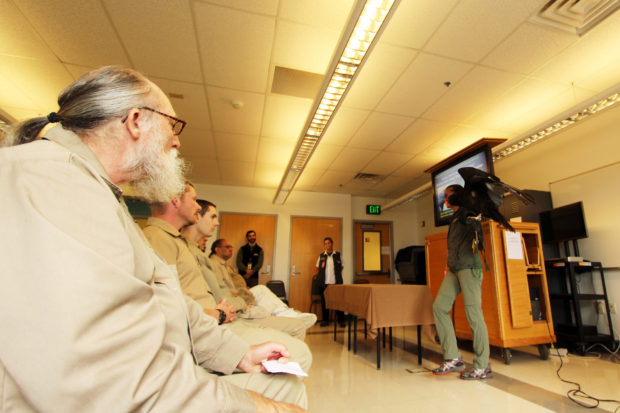
June’s lecture at Stafford Creek Corrections Center (SCCC) welcomed royalty from West Sound Wildlife Shelter. I had met Pele, Fire Goddess and falcon (a kestrel), once before, and she was as impressive as ever. However, never before had I met a turkey vulture, and I was immediately smitten with Princess Remington.
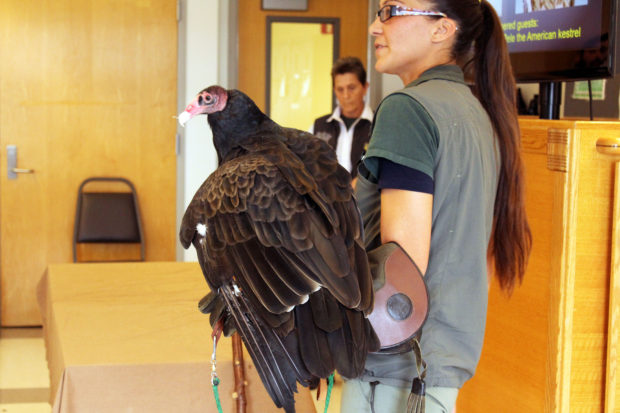
Princess Remington was named for the gun that disabled her left wing during a flight over Shelton. Now she graces classrooms throughout the Puget Sound so that students can discover the magnificence of turkey vultures.
The Princess’ handler is Fawn Harris, our coordinator for the conservation nursery at Washington Corrections Center. She also is staff at West Sound Wildlife Shelter, and she answered nearly an hour of questions on turkey vultures. We learned that turkey vultures are social birds. They travel in groups and are monogamous. Fawn says that if she offers Princess Remington food she does not like, the vulture will still remember and express her dissatisfaction with Fawn a week later.
Fawn told us that Princess Remington was unusually at-ease in this classroom. She bowed to the assembled students!
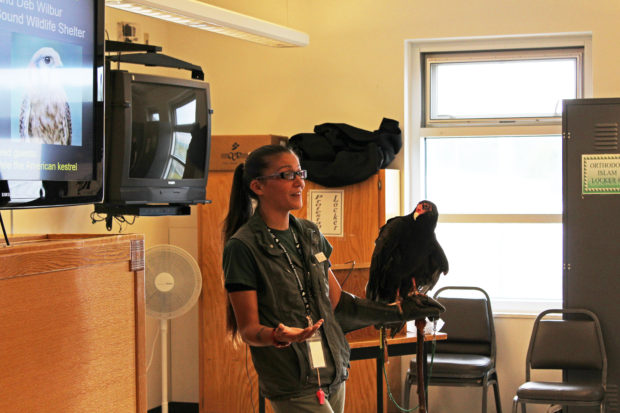
Fawn Harris clearly loves her work, and she shared a wealth of information about turkey vultures. Never again will I see them the same way.
While vultures are classified as raptors, they don’t have the typical talons or hooked beak. In fact, they are not capable of killing and they are rarely aggressive. Turkey vultures only eat animals that are already dead, finding them with an exceptional sense of smell. The acid in their stomach’s is comparable to battery acid, and diseases cannot pass through. By scavenging, they effectively remove maladies such as rabies, botulism, and cholera from the environment – without vultures, we would see far more of these nasty diseases.

Deb Wilbur of West Sound Wildlife Shelter describes the habits of kestrels.
Deb Wilbur told us about Pele. She is an American kestrel, North America’s smallest falcon. Deb fed Pele a baby mouse, and she tore it apart as the presentation went on. The crunching was audible to at least the first couple rows – gross and amazing! A special thanks to Deb who has volunteered her time at two or three other SPP lectures.
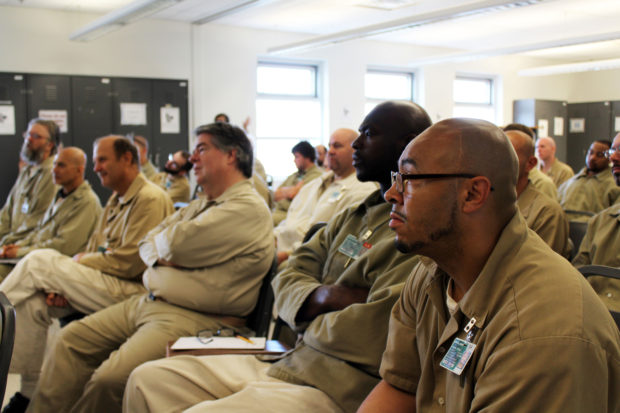
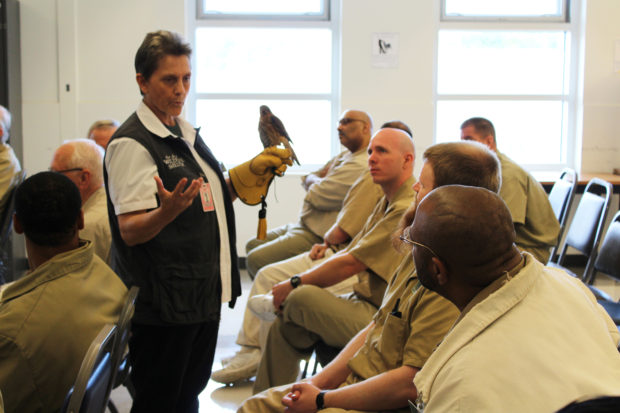
Deb took Pele for a tour of the classroom.
The lecture series students offered excellent questions to the presentation, and were fully attentive to the visiting royalty. At the lecture’s conclusion, one of them remarked to me “Another great lecture!” Holy cats, if they are all that good, I have got to start attending more of SPP lectures!

































